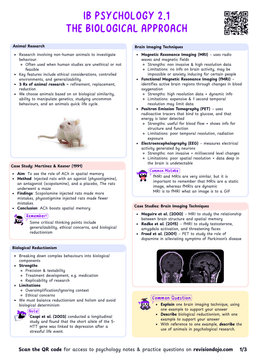Cognitive Biases
- Confirmation Bias is the tendency to pay attention to information that confirms existing beliefs and ignore contradictory ideas.
If you meet someone who you don't like on first impression, you may notice their irritating behaviours more than their kind ones.
Case studyMendel et al. (2011)
Aim
Are mental health professionals affected by confirmation bias?
Method
- A decision task was administered to 75 psychiatrists and 75 medical students.
- They either looked for confirmatory information, contradictory information, or balanced information.
Results
- 25% of medical students and 13% of psychiatrists showed confirmation bias.
- Confirmatory search led to participants insisting on the wrong diagnosis and administering wrong treatment in some case.
Critical Thinking
- The % in Mendel et al. (2011) is a relatively small number, telling us that the issue may not be as big as we are making it seem.
- It is still widely agreed that it is incredibly powerful and increases behaviour.
Conditioning
Classical Conditioning
- Classical conditioning was first researched by Ivan Pavlov and John Watson, both of whom participated in the rise behaviourism in the early 1900s.
- They believed we had no free will (determinism) and that we were a product of our environment.
- They believed we should ignore mental process and focus on observable behaviours.
Key Terms
- Unconditioned Stimulus (UCS): A stimulus that triggers an automatic response without learning (e.g. salivating when we see food)
- Unconditioned Response (UCR): The response to the UCS that is not learned.
- Neutral Stimulus (NR): A stimulus that has no behavioural response.
- Conditioned Stimulus (CS): A previously neutral stimulus that has been paired with an UCS to cause an UCR.
- Conditioned Response (CR): A previously unconditioned response that has been conditioned to occur in response to a previously neutral stimulus.
- In Pavlov's study, Pavlov repeatedly paired the ringing of a bell with food in front of a dog.
- Eventually, the dog salivated at the sound of the bell.
- The dog associated the bell with the fact that food will come.
In this case:
- The food is the unconditioned stimulus.
- The salivation is the unconditioned response that became a conditioned response.
- The bell is a neutral stimulus that became a conditioned stimulus.
- An example is in advertising.
- If you associate a footballer with greatness, and they start promoting a soda brand, you may begin to associate that soda brand with greatness.
Operant Conditioning
- If a behaviour is reinforced, it is likely to happen again.
- If a behaviour is punished, it is likely that it will happen less frequently.
Key Terms
- Positive Reinforcement: Something that is added that will increase behaviour (e.g. a good grade in response to studying hard)
- Negative Reinforcement: Something that is removed that will increase behaviour (e.g. pain relief after taking a painkiller)
- Positive Punishment: Something that is added that will decrease behaviour (e.g. getting fined for speeding)
- Negative Punishment: Something that is removed that will decrease behaviour (e.g. getting your phone taken away for misbehaving)
- Do not mistake positive/negative with increasing/decreasing behaviour.
- Positive means something is added, negative means something is getting removed.
- Look to whether it is reinforcement or punishment to see a consequence's effect on behaviour.
Other Important Terms
- Generalization: Doing a behaviour in different (but still similar) situations (e.g. when a child is being potty trained, they learn to go to the bathroom in all toilets, not just their own)
- Discrimination: Doing a behaviour only in the presence of a certain stimulus (e.g. a child learning to say "dad" in response to only their father and not any older man)
- Extinction: When reinforcement is no longer provided so the behaviour disappears/occurs less frequently.
Skinner's Box Experiment
- Skinner let pigeons go hungry and then placed them in a puzzle box, which had a button that could be pressed for food to be released.
- In one experiment, Skinner let food come every 5 seconds regardless, and the pigeons associated whatever they were doing before with the food, so that behaviour increased.
- In another, he placed a rat with a lever that would let food down the chute.
- The rats quickly learned to associate the lever with food, and they pulled the lever more often.
- Skinner also shocked the rats with the only way to stop the shocks being to pull the lever, which the rats quickly learned to do.
Critical Thinking
- Widely used in different areas, even outside of psychology.
- We must be wise in the way we administer reinforcements and punishments.


